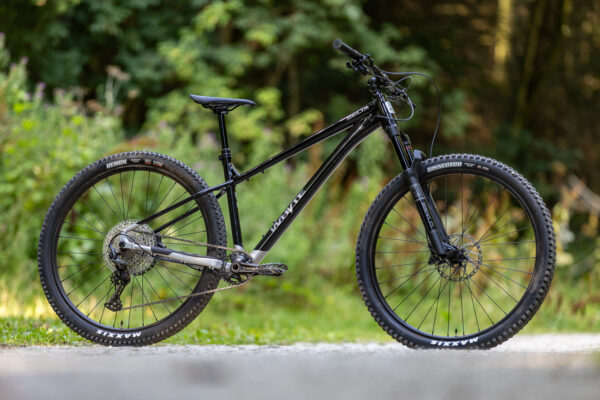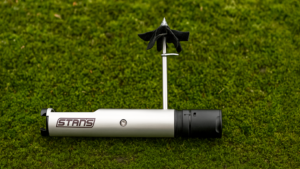The Whyte Secta RS combines brilliant geometry, cost effective parts and a sublime choice of fork
I’ve tested hardtails for over 20 years, Whyte’s new Secta RS is the best bike out there under £1,500
Renowned for its forward-thinking approach to bike design, British brand Whyte has been on a bit of a mission of late to launch new bikes and tech.
JD reviewed the whyte Kado RSX in the summer and reckoned it was one of the best electric mountain bikes of 2025: And we’ve also seen new versions of the award-winning E-Lyte Evo crop up over the past few months.
Whyte’s regular pedal powered bikes haven’t been left out though it seems, there’s a new range of hardtails called the Secta that replaces the old 900-series bikes of old with a more stripped back and simplified approach.
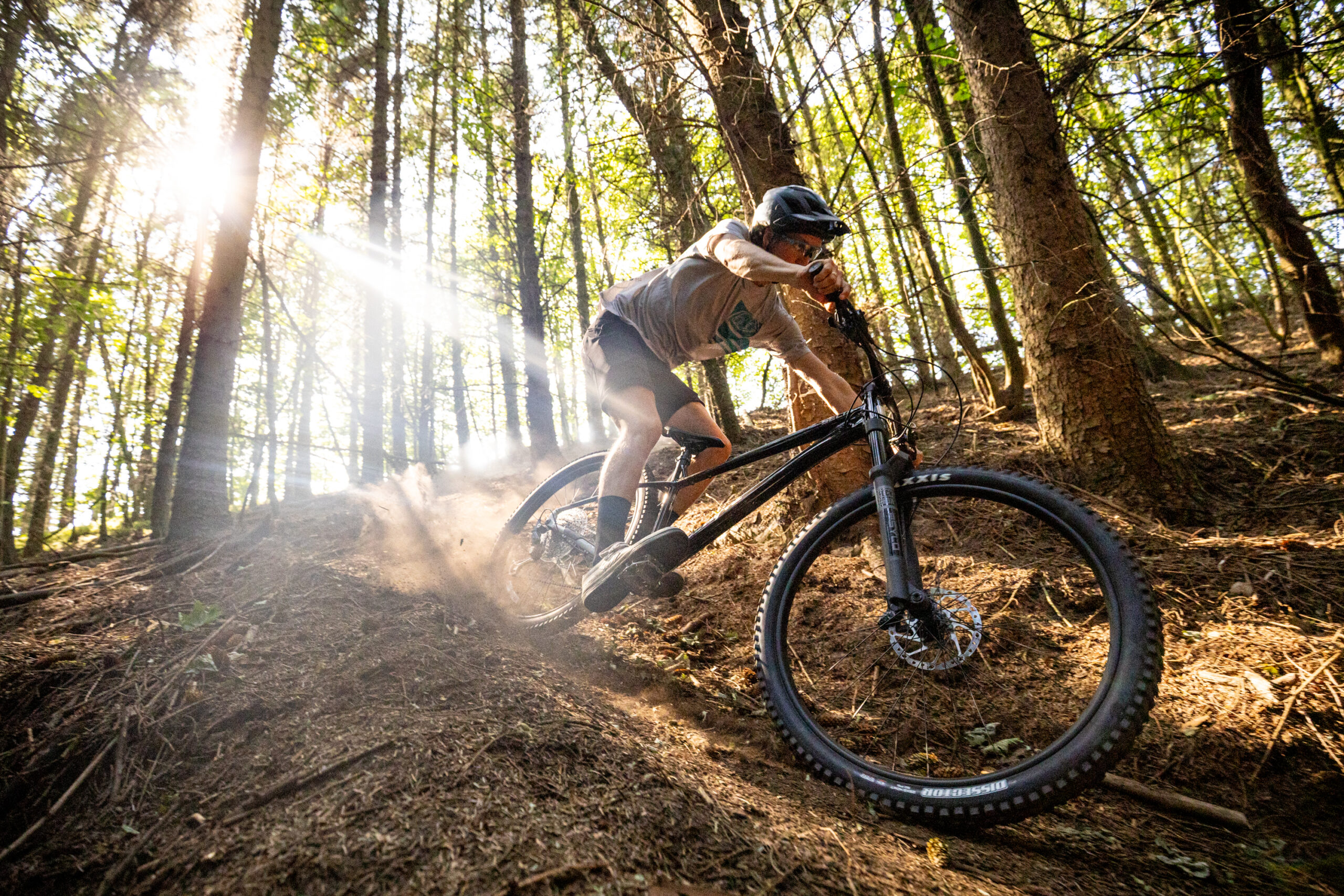
Whyte Secta RS
Whyte Secta RS need to know
- Secta is Whyte’s new aluminium hardtail range
- This RS model here is the priciest of two 29-er wheeled bikes and comes with a 130mm travel RockShox Psylo Gold fork
- Secta also comes in two 26in, youth-sized, versions for kids or smaller riders
- Modern hardtail geometry takes its cues from Whyte’s successful 900-series hardtails and carries over those bikes’ ultra-low bottom bracket heights
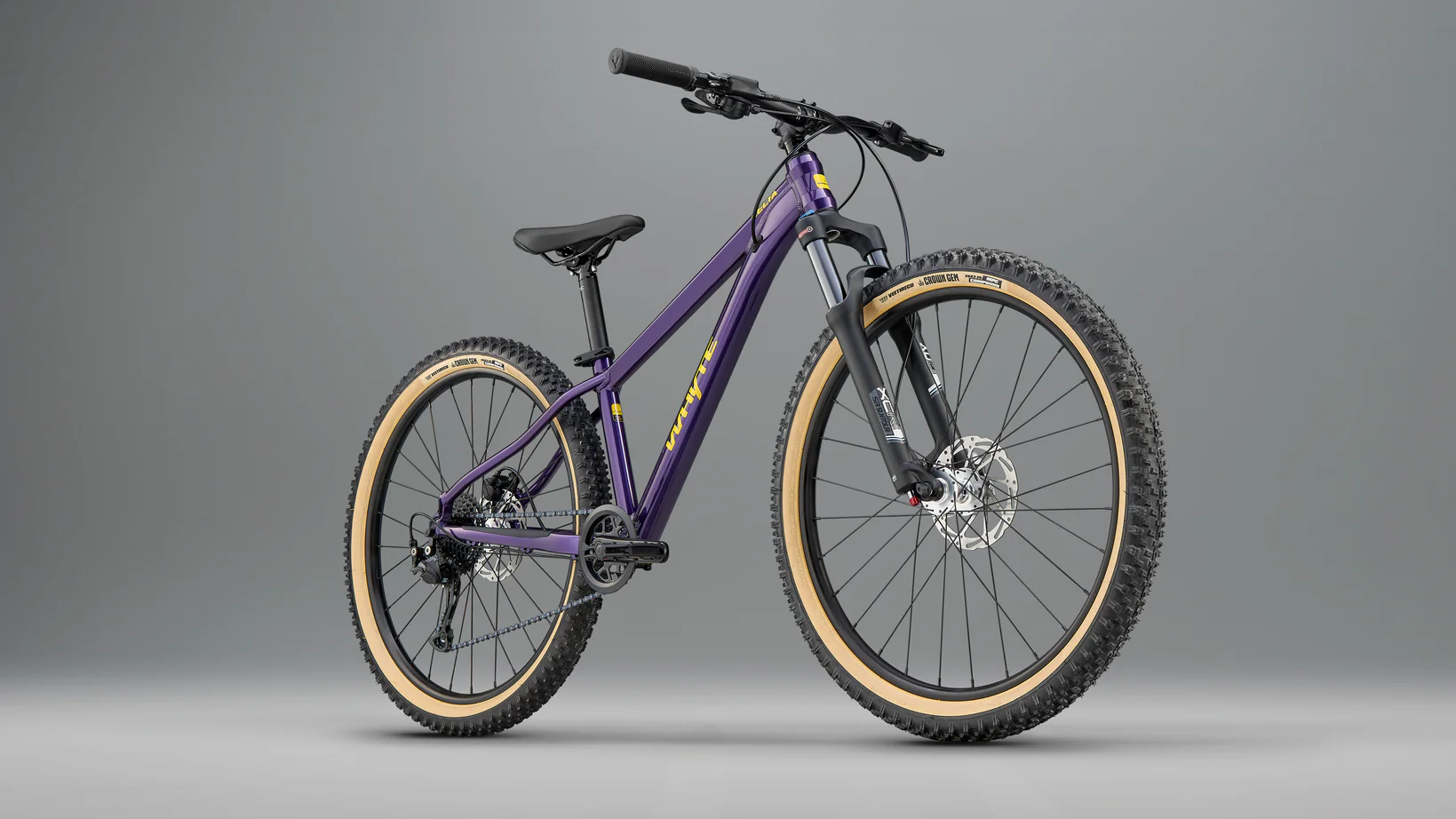
Whyte Secta 26
There are two 29-in wheeled adult versions and an incredibly-priced 26in wheeled youth version that is going to be on a lot of parents’ radars at just £649.
– Short of time? Click here to skip to the verdict –
This top-of-the-line Whyte Secta RS here is just under £1.5k, and the S model is £400 less with a RockShox Rekon fork, Shimano Cues drivetrain and Tektro brakes.

Whyte 909 X Enduro
With Secta, Whyte is no longer offering a more high-end hardtail, instead recognising that bikes like this are more likely to be an entry-level or second bike in today’s world with more choice and competition for rider cash than ever across e-bikes, full suspension rigs and rigid models.
That means it’s byebye to the brilliant Whyte 909 X Enduro, one of the best hardtail mountain bikes we’ve ever ridden.
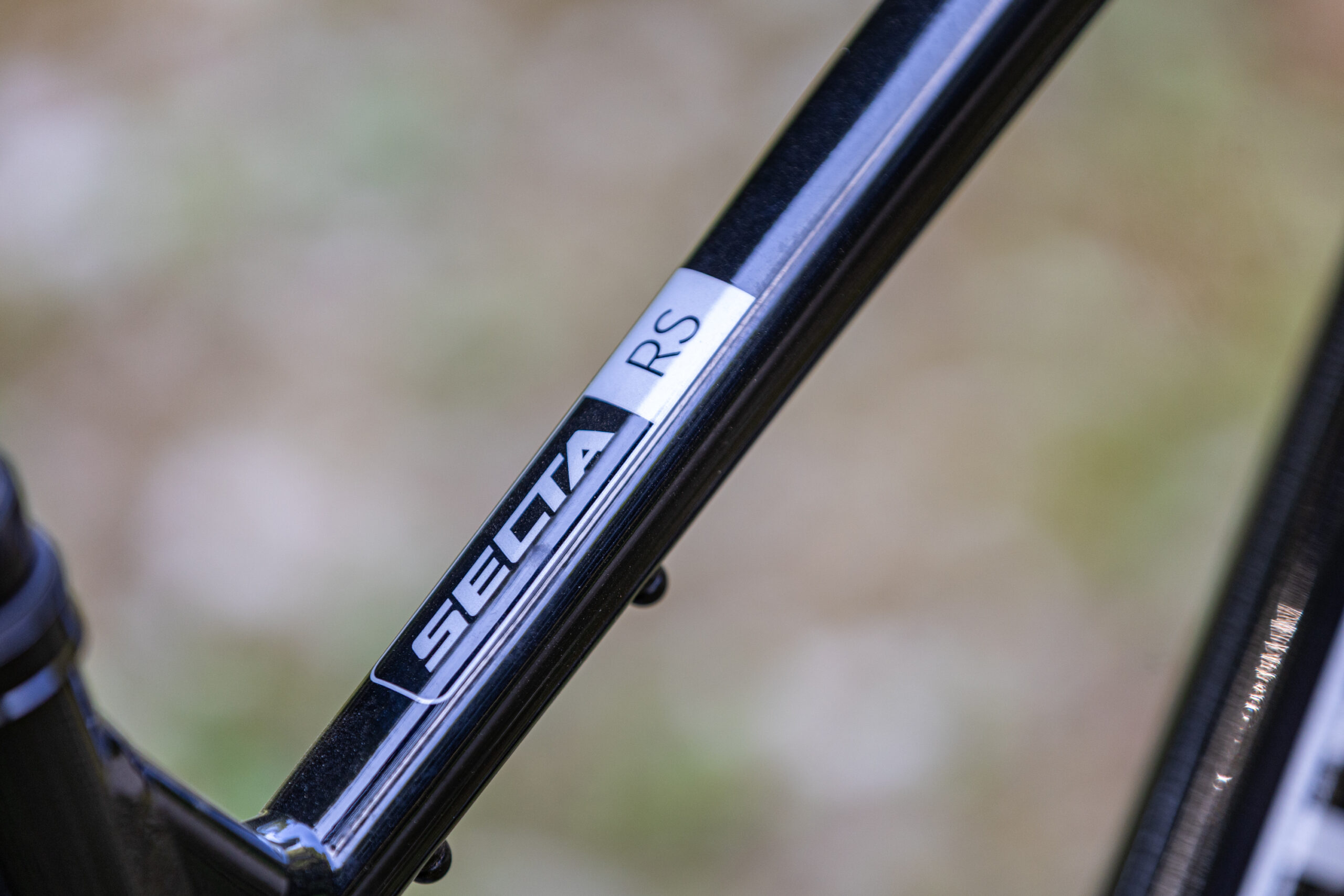
Whyte Secta RS
The Secta geometry and attitude still appears to borrow a lot of knowledge and design tech from Whyte’s previous hardtails though, and that can only be a positive. The brand practically invented aggressive, slack angles and super low bottom brackets in this genre.
The Secta kit list is very well considered too and offers competitive pricing with sorted gear on this RS version for just under £1,500; impressive when many rivals are offering this kind of kit on trail hardtails for around £2,000.
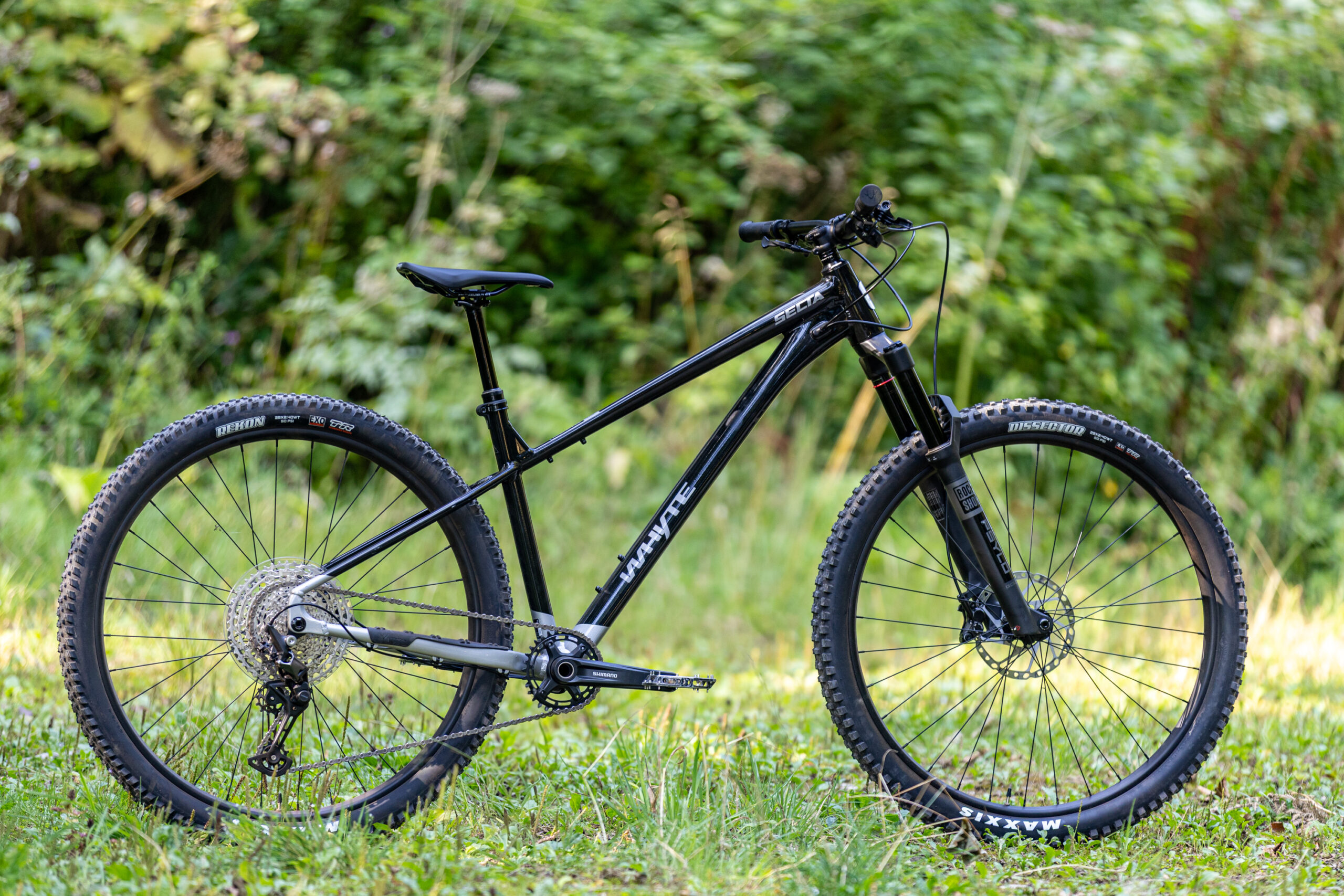
Whyte Secta RS
Frame
Like all the brand’s award-winning hardtails for the last decade or so, the Secta uses a hydroformed frame sculpted from T6 aluminium. The front triangle uses better quality materials and construction processes and the whole thing is heat treated and guaranteed for life.

Whyte Secta RS
The Secta is sensibly designed around a 130mm travel fork. I’ve always found hardtails with more travel than this end up feeling unsettled as the head angle steepens excessively when longer travel forks compress. A tapered, zero-stack, headtube at a beefy welded junction carries a quality RockShox fork and kicks it out at 63.5°.
Further back, there’s a 76° seat tube that steepens as frame sizes grow to ensure taller riders remain far enough forward on the Secta while climbing with the saddle higher.
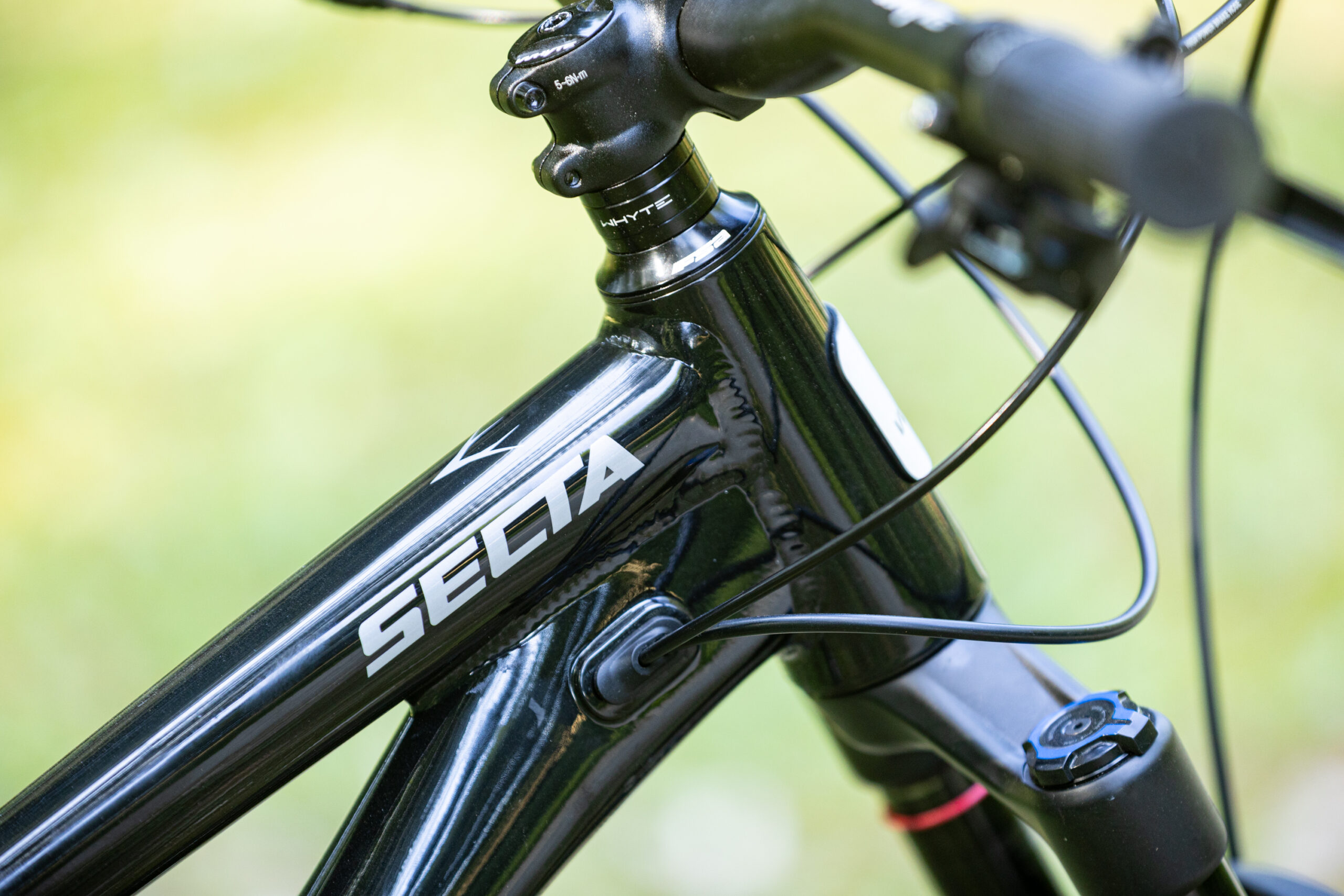
Whyte Secta RS
The frame has an easy to live with external cable routing at the headset, rather than an annoying internal set up that loops through bearings, and fully sealed cable runs with grommets into the tubing.

Whyte Secta RS
The seat tube is very compact to afford loads of standover clearance for my legs, and is also totally straight, so longer dropper posts get a deep insertion depth to tune perfect rider saddle height. Incidentally there’s 300mm to play with. The seat stays are also thinner for extra flex or compliance over bumps.
Whyte has form for some of the lowest bottom bracket heights in the MTB game, and it’s the same story here. A sub 300mm BB static position gets rider weight as low as possible and that means greater stability on the ground and more cornering snap.
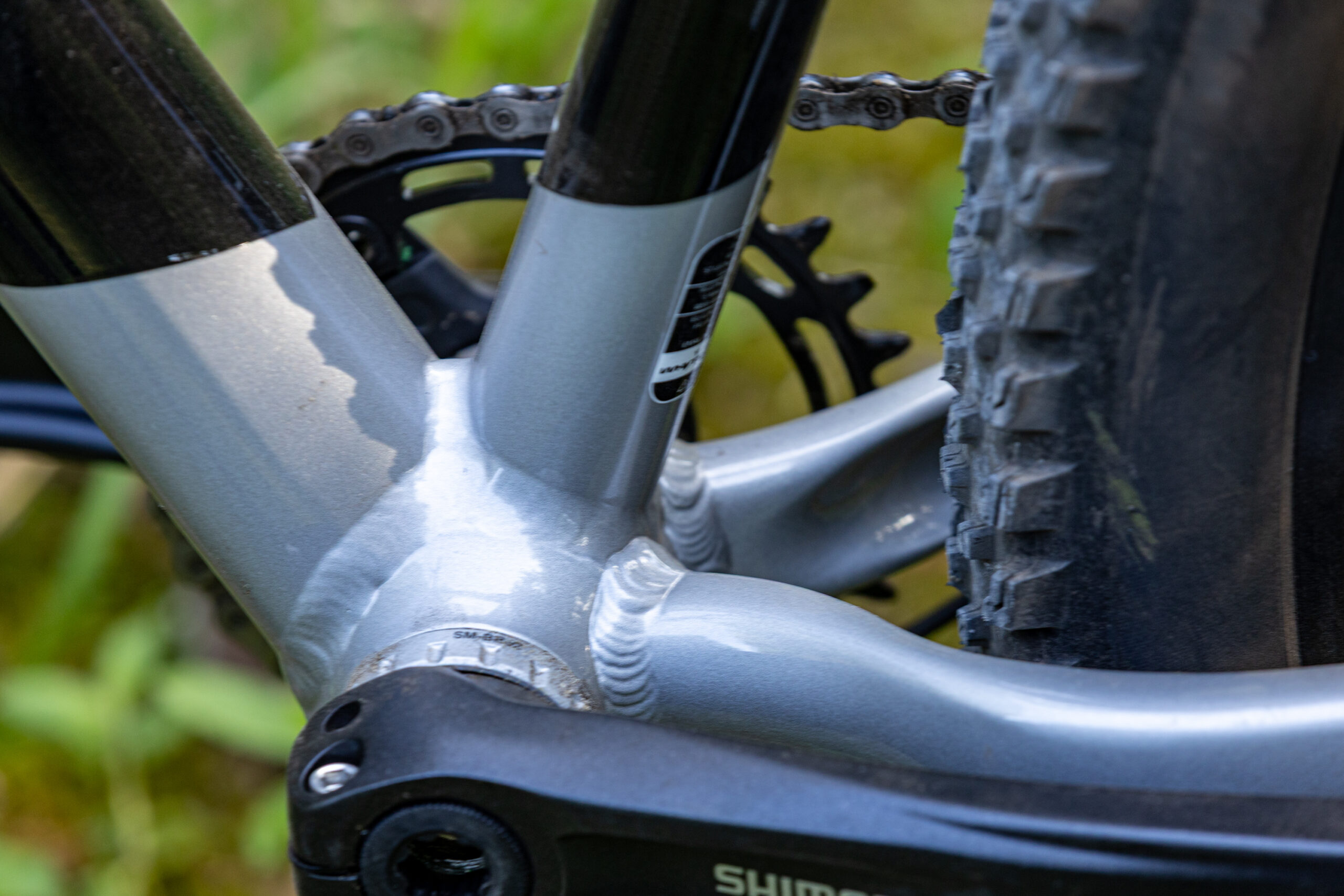
Whyte Secta RS
The BB itself is a threaded BSA 73mm size that’s durable and easy to replace, and a single chainring-only design that affords more clearance for the back tyre. Rear stays can therefore accommodate up to 2.6in rubber, if I’d wanted to run fatter tyres that are more shock-absorbing.
The Secta back end is at the longer side of things for a hardtail, with 443mm chainstays that mean the back tyre’s contact patch is slightly further behind feet than on many frames.
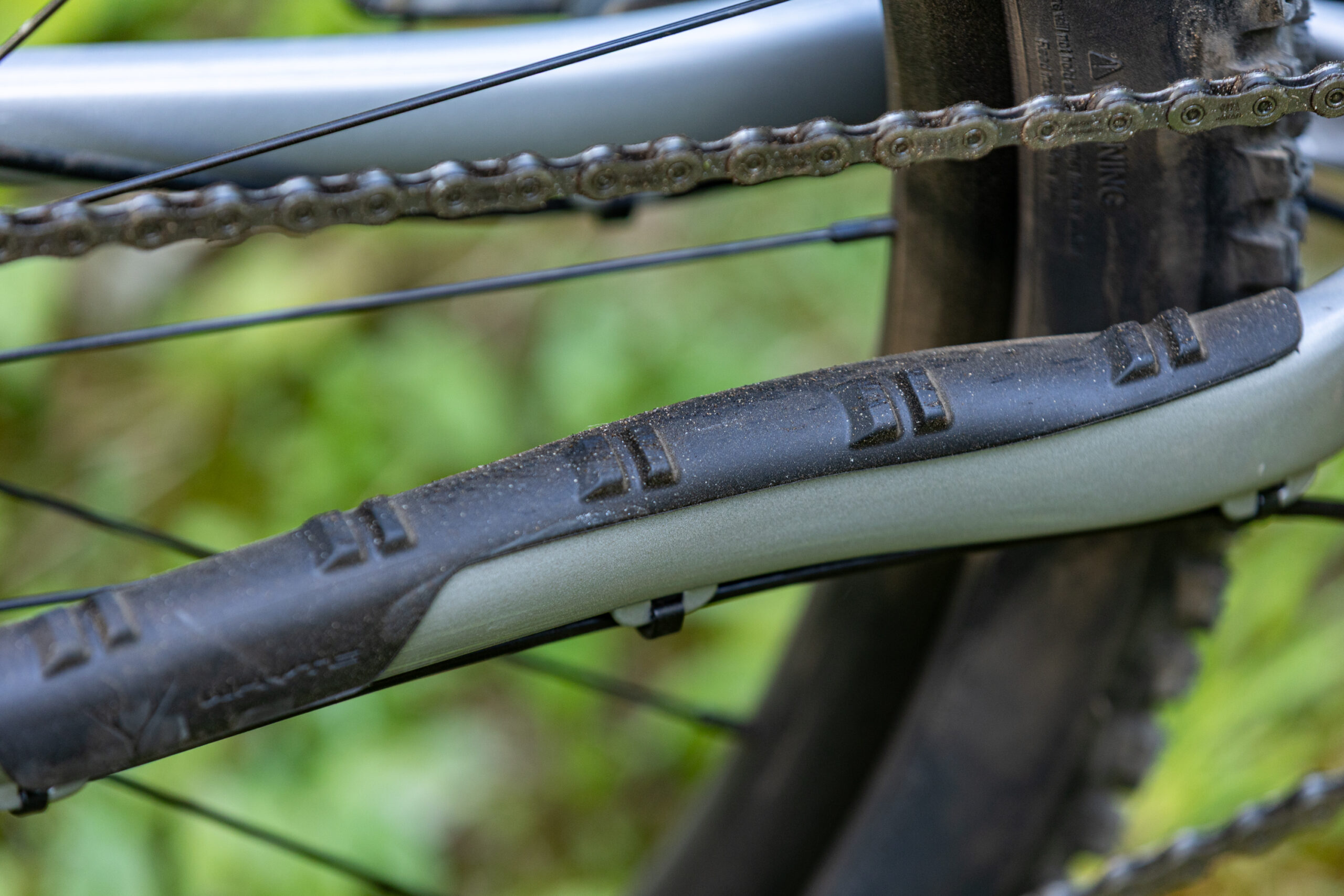
Whyte Secta RS
The stays also come with a custom chainslap rubber protector, SRAM UDH mech hanger (that’s easier to source a replacement for) and Boost 148mm spacing that’s the gold standard on all premium MTBs. The dropout arrangement itself is slightly funky with a welded loop tail piece that places the brake mounts inside the rear triangle.
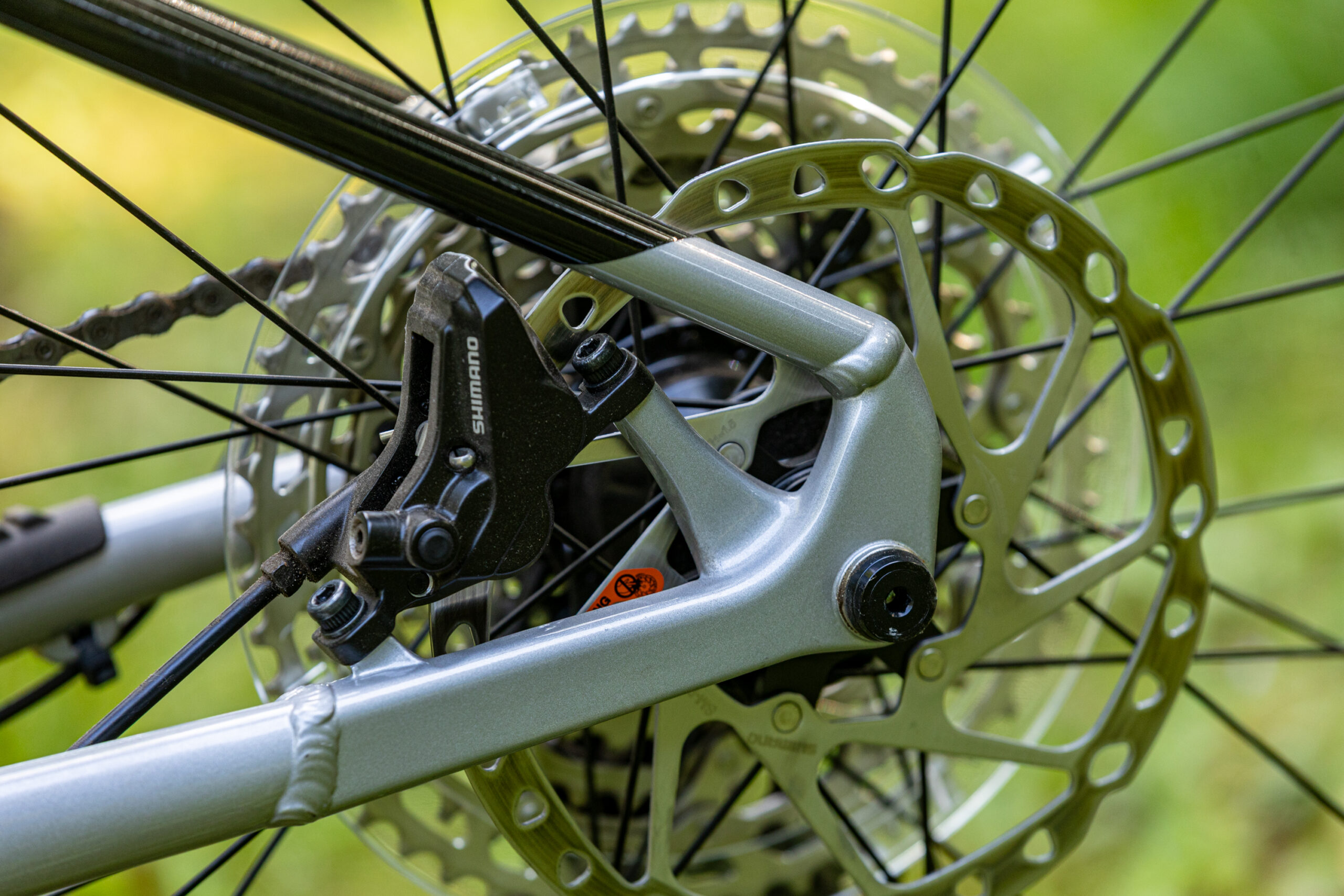
Whyte Secta RS
Whyte sweats further details with bottle bosses that use learning from its e-bike design and put water bottle weight as low down as possible in the front triangle and just above the BB shell. There are also extra bosses under the top tube for cargo, which are also set back as far as possible so any added weight here is lower and not up near the steering axis.
Suspension and components
With no rear suspension to smooth the ride, a key component on any hardtail is the suspension fork. Whyte has gone for a RockShox Psylo fork with 130mm travel here that, for my money, has by far the best damping and action available at this price point. The cheaper Sektor fork on the Secta S was noticeably less capable and controlled when I tested it on a different bike.
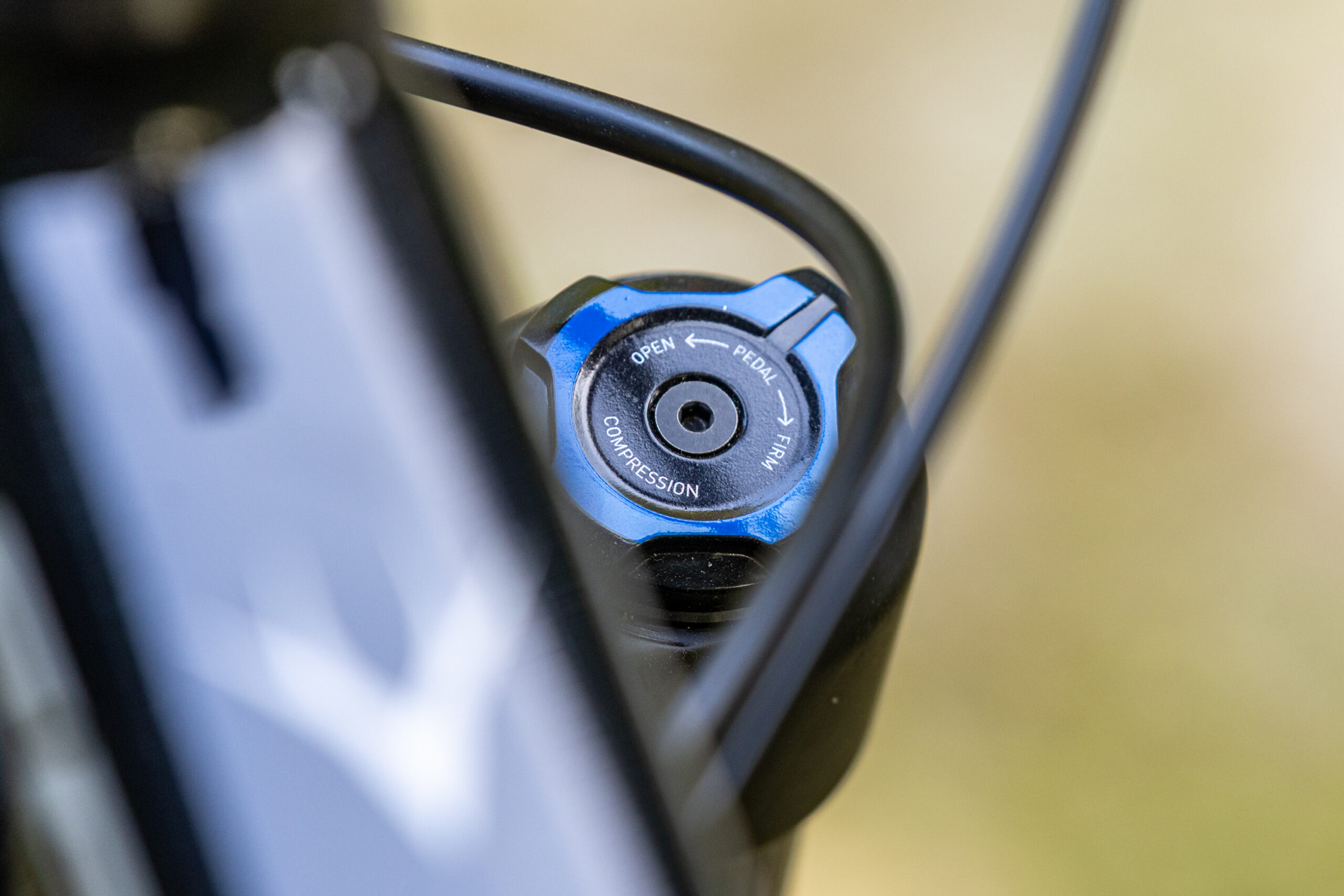
Whyte Secta RS
The short travel fork helps maintain the bike’s handling as it moves through the stroke, and the shorter 44mm offset (fork rake) also means the steering is better stabilised.
To me, this translates to feeling like the handlebars are more planted and less fidgety in your hands and the front tyre being less likely to tuck in or push out on steep downhills. All of which is much appreciated on a hardtail that is inherently a bit more squirrelly and hectic than a full suss bike.
The Psylo has pretty basic external adjustments, there’s a compression dial with three positions, but the good news is it offers noticeable changes in support and control in the down stroke. There’s a broad range to tune the rebound too, at the other end of the leg. You can also tune the Debonair air spring by adding or removing spacers so the Psylo ramps up differently.
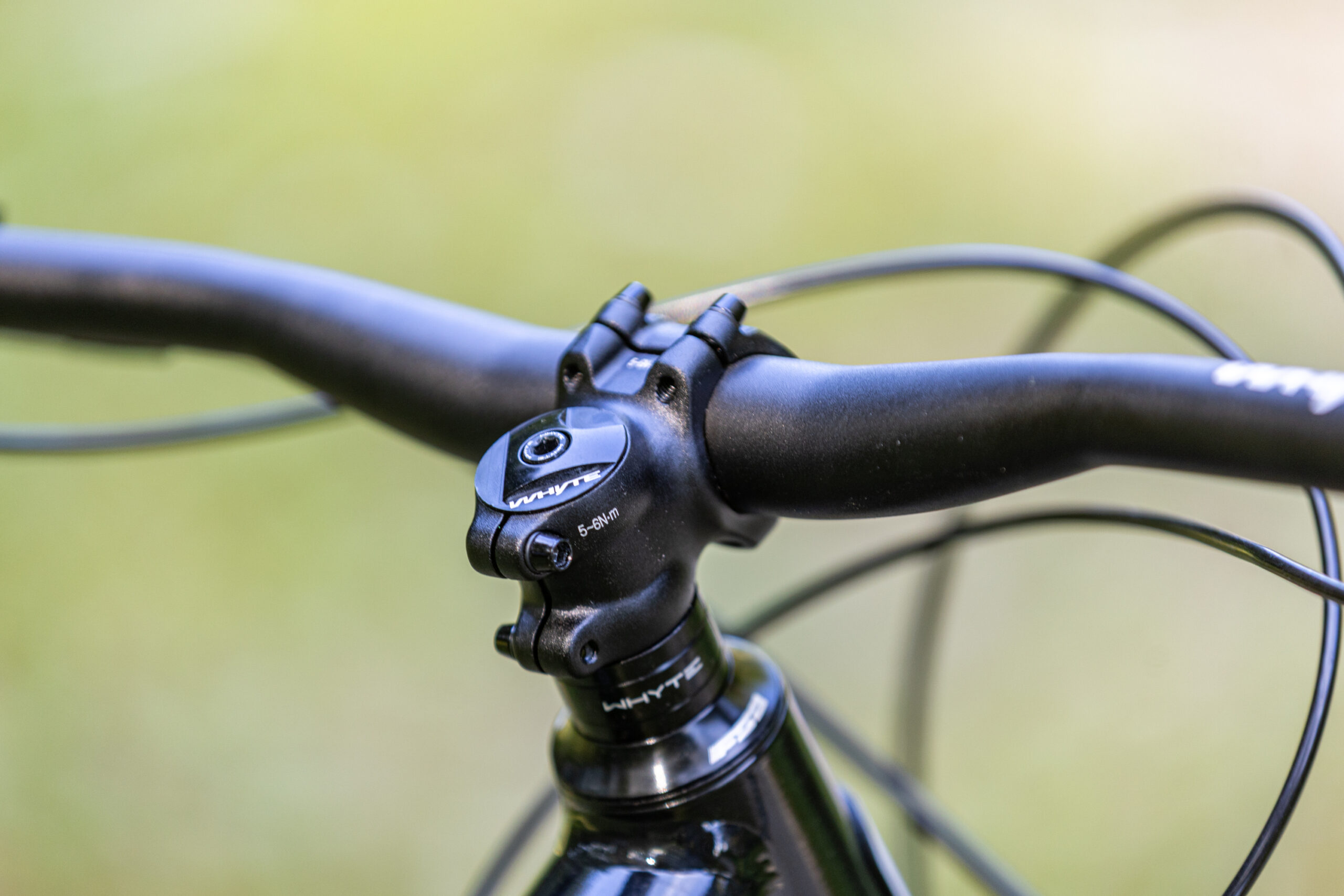
Whyte Secta RS
Controlling the steering is a decent Whyte own-brand alloy handlebar and short stem and some excellent enduro grips that are also stock on the brand’s most expensive bikes and add great damping and comfort.
The Trans X RAD+ dropper post here is proven and one of the best at the affordable end of the market. It comes with 150mm drop on S, 170mm on M and 200mm on L and XL sizes. Whyte’s own custom Ergon-style saddle is a bit of a secret spec highlight too, seeing as it’s super comfy and never gets in the way when I’m slipping off the back.

Whyte Secta RS
Elsewhere on the spec sheet, it’s a Shimano story with the latest Deore 12-speed drivetrain and MT420 4-piston brakes. Deore is a bit heavier and obviously not as refined as more expensive kit, but overall it works well and the cheaper brakes here are surprisingly powerful and controllable even with 180mm rotors at both wheels.
Riders with very small hands might find the longer lever blades less ergonomic than some, but these are adjustable to pull the blade closer to the bar and you can adjust reach down to 75mm.
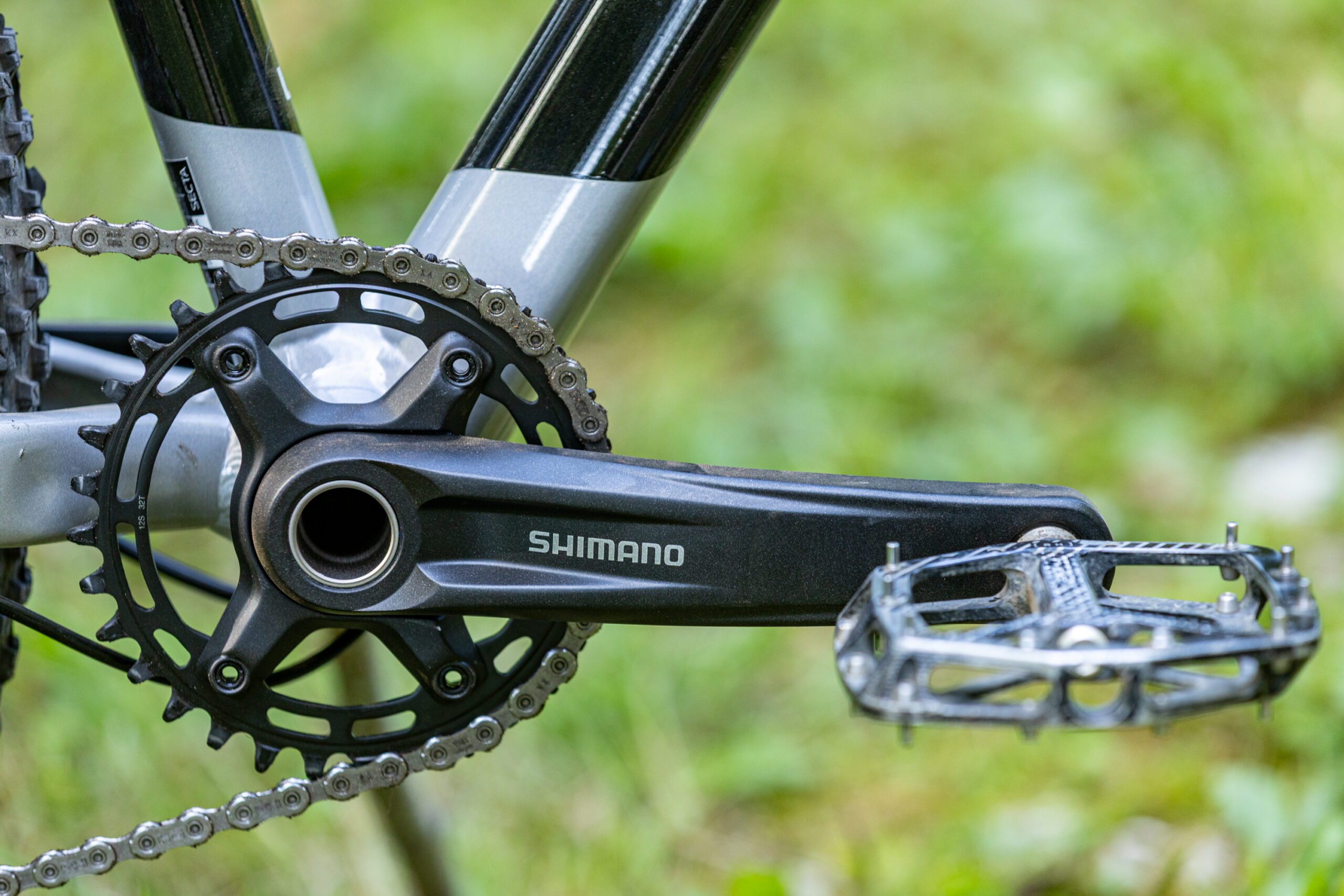
Whyte Secta RS
At 170mm long, the Shimano cranks aren’t as short as some modern full suss or e-bikes bikes are rocking, and also aren’t the same Deore level as elsewhere. But it’s hard to notice much difference actually riding, and I didn’t have any issues clanging crank arms on the floor either; so long as you’re not totally ham-fisted when climbing.
Secta wheels are unbranded, with a pinned rather than welded joint and 32 spokes at each end. Pulled out of the bike, the wheels feel pretty heavy, so this is obviously an area where the affordable price is reflected, and it’s a similar story with the Maxxis Dissector/Rekon tyres. Both tyres roll pretty fast and the EXO reinforced casing is appropriate for a trail hardtail, but a bigger issue is the rubber here.
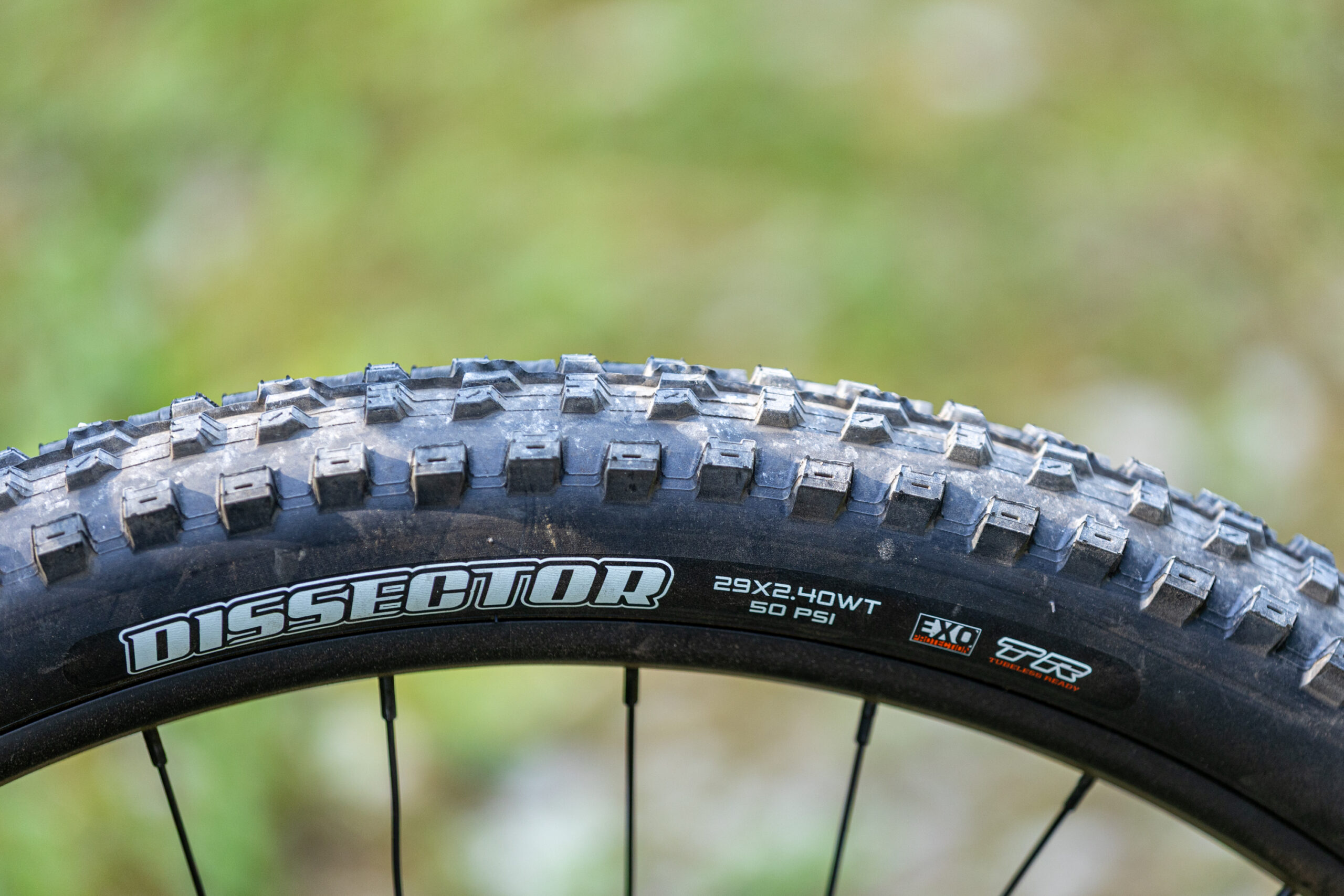
Whyte Secta RS
I’m already not a fan of Dissector tread on the front end because the broad gap between central and side knobs feels vague and sketchy when I’m leant over. Worse though, the cheaper dual compound here just doesn’t have the grip to catch on edges when the trails are wet. The EXO casing can feel dicey in muddy and sloppy conditions too.
It’s not a deal breaker because tyres can be swapped out and they’re reasonably affordably.
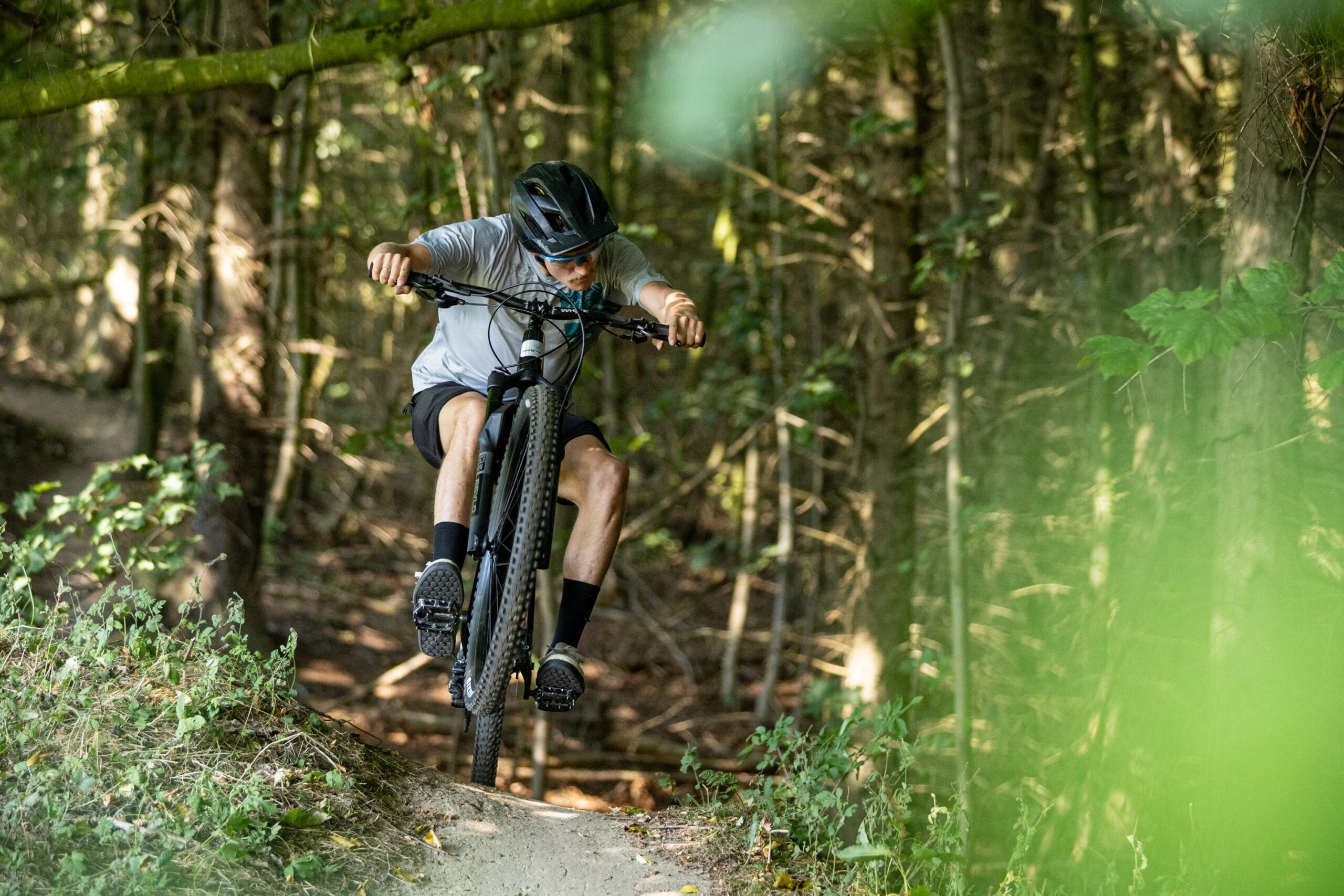
Whyte Secta RS
Performance
Much like every Whyte hardtail I’ve ridden in recent years, you get going on the Secta and it immediately feels dead right. Steering is natural and neutral and the low BB gets my feet down near the floor so the ride position feels much more like a full suspension bike in sag. Not a bit like I’m perched above the ground, something all too common on many hardtails.
I initially suspected the longer chainstays here might make the Secta feel a little less nimble, less easy to lift the front tyre up and less flicky. This is not the case at all.
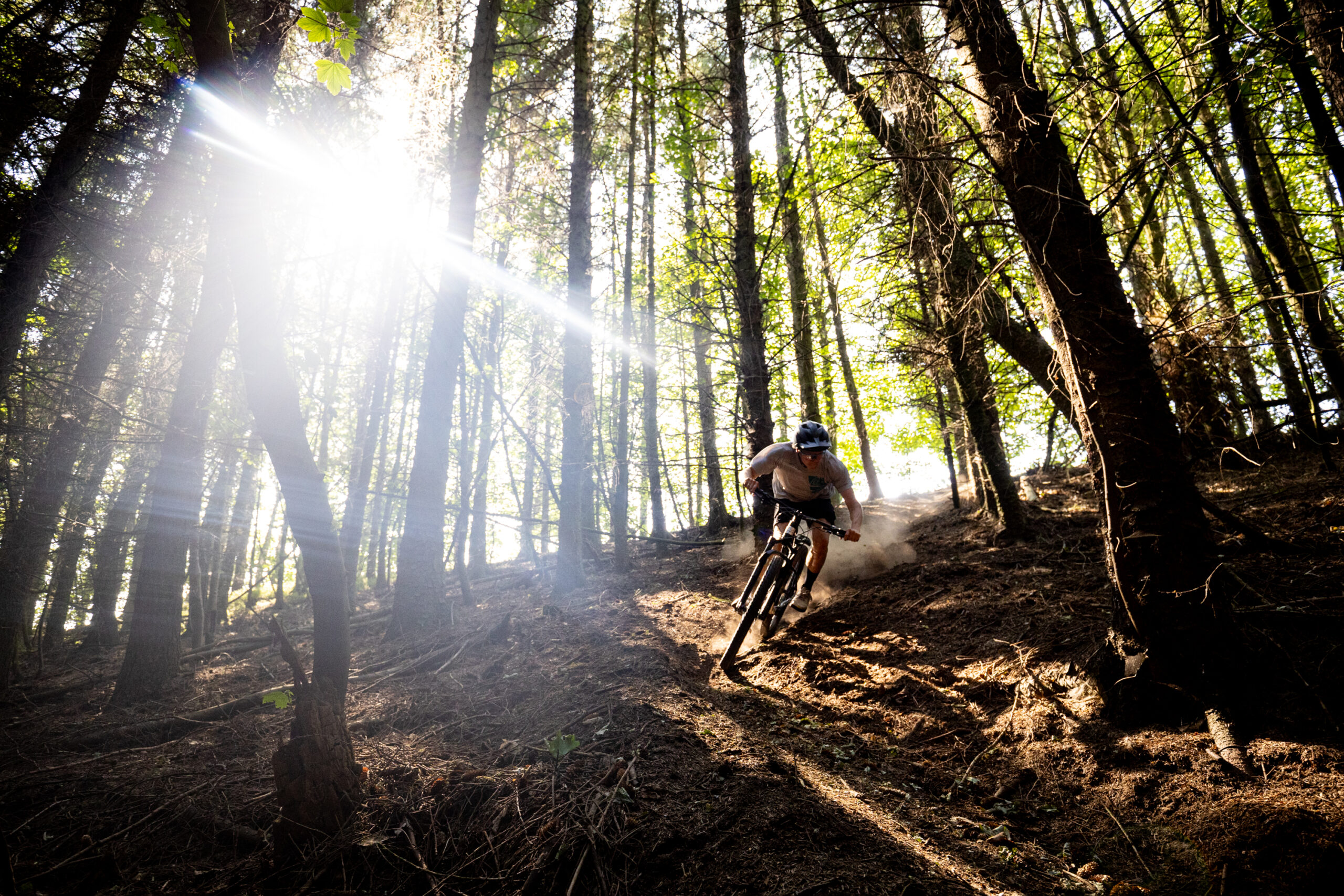
Whyte Secta RS
Even though this design shifts my centre of gravity forwards and means I’m not hanging off the back as much, in reality it’s not an issue. I found it very easy to scuff the tyres sideways on purpose to set up for corners, manual over bumps or loft the front tyre up over obstacles. I’d even go so far as to say I really liked the rider balance between each tyre.
The aluminium frame with reasonably big tubes and welds feels really solid and occasionally maybe a bit too solid. This Secta definitely isn’t at the end of the ride spectrum where there’s a super supple and slinky feeling like on some steel hardtail frames.
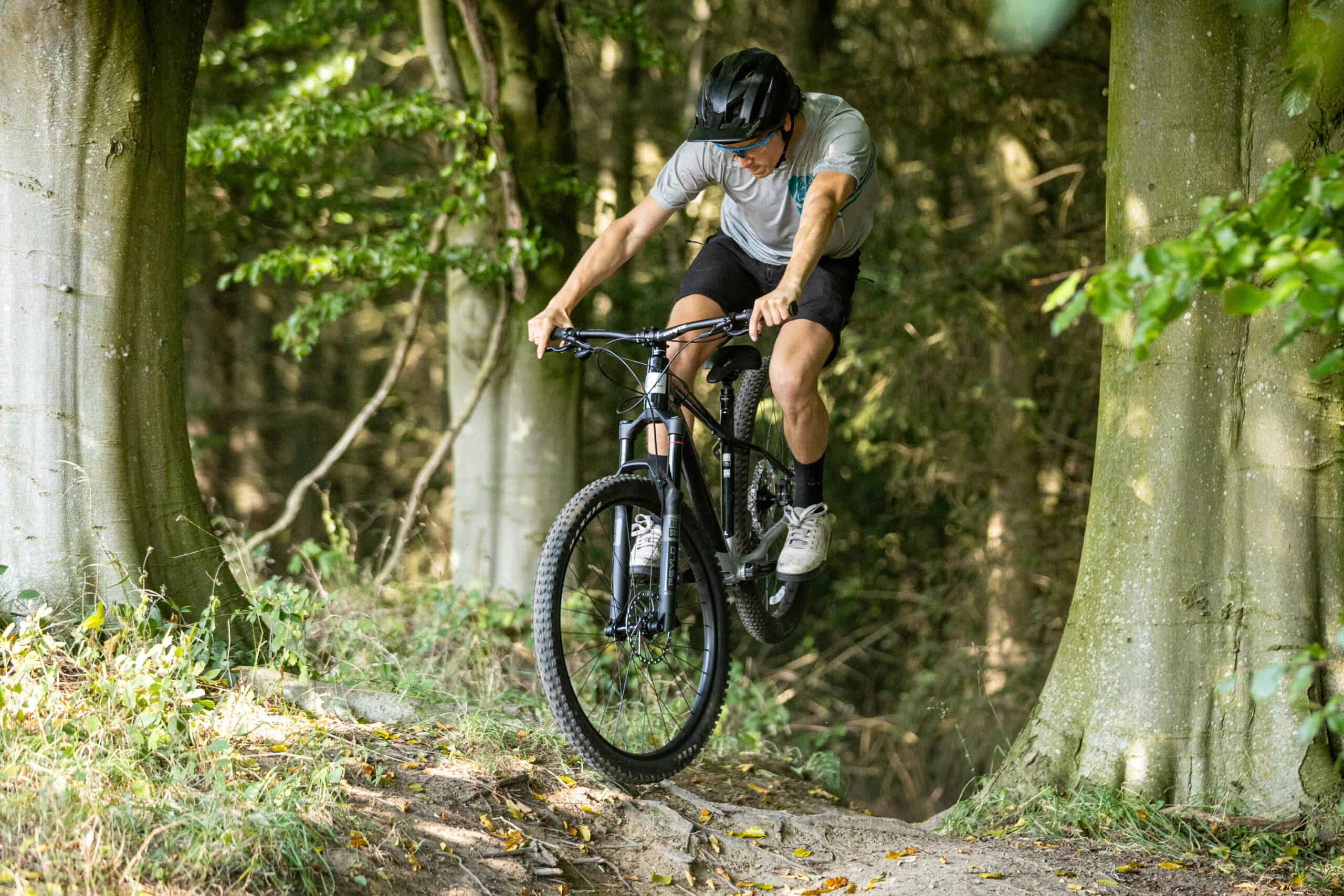
Whyte Secta RS
This also might be exaggerated by the fact that I haven’t ridden a hardtail for ages, because there’s no escaping the fact I was jiggled around a lot more than aboard any full suspension bike.
One thing that helps with this aspect and adds front end smoothness is RockShox’s Psylo Gold fork. It’s super plush and smooth for what is essentially a budget fork and you could easily be convinced – with its new Isolator RC damper – this was a piece of kit that costs twice as much money.
Being so smooth to trace over bumps and rub out vibrations is a major boon on a hardtail that inevitably pitches rider weight about more. Despite only having three compression damping settings (open, pedal and firm) the differences are meaningful. It’s so sensitive that I actually ran the more calmed down pedal position on flowier trails, because it really is that supple.
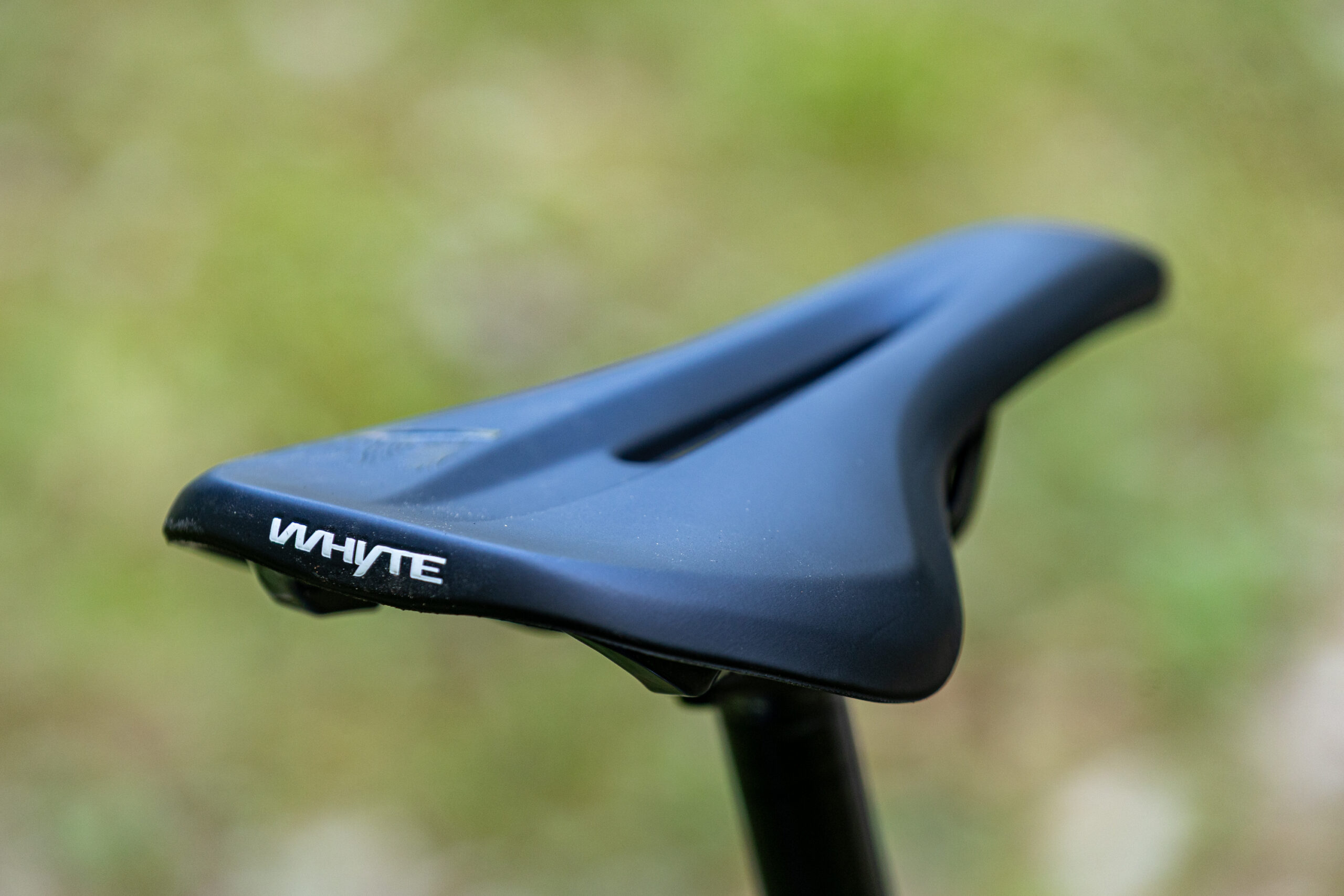
Whyte Secta RS
Whyte’s saddle is superbly comfortable, the grips are genuinely grippy and offer great damping and extra relief from trail chatter. They’re both extra little details that sweeten the overall ride package and mean you don’t have to waste any more cash tuning the controls and set up.

Whyte Secta RS
Stopping and going are both totally fine too with a solid feeling drivetrain and no quirks in the way the Secta pedals and climbs. The cheaper Shimano brakes are solid too even with smaller 180mm rotors, because the longer lever blades mean I can get plenty of force into slowing down.
Just about the only criticism I might have of the Secta then is it does kind of thwack into things in a way that’s common to all aluminium hardtails. It translates most impacts – fat roots, square edge stones, rocks bigger than my fist – straight into my feet through the rear tyre, which can also jiggle my shoes a little on pedals.
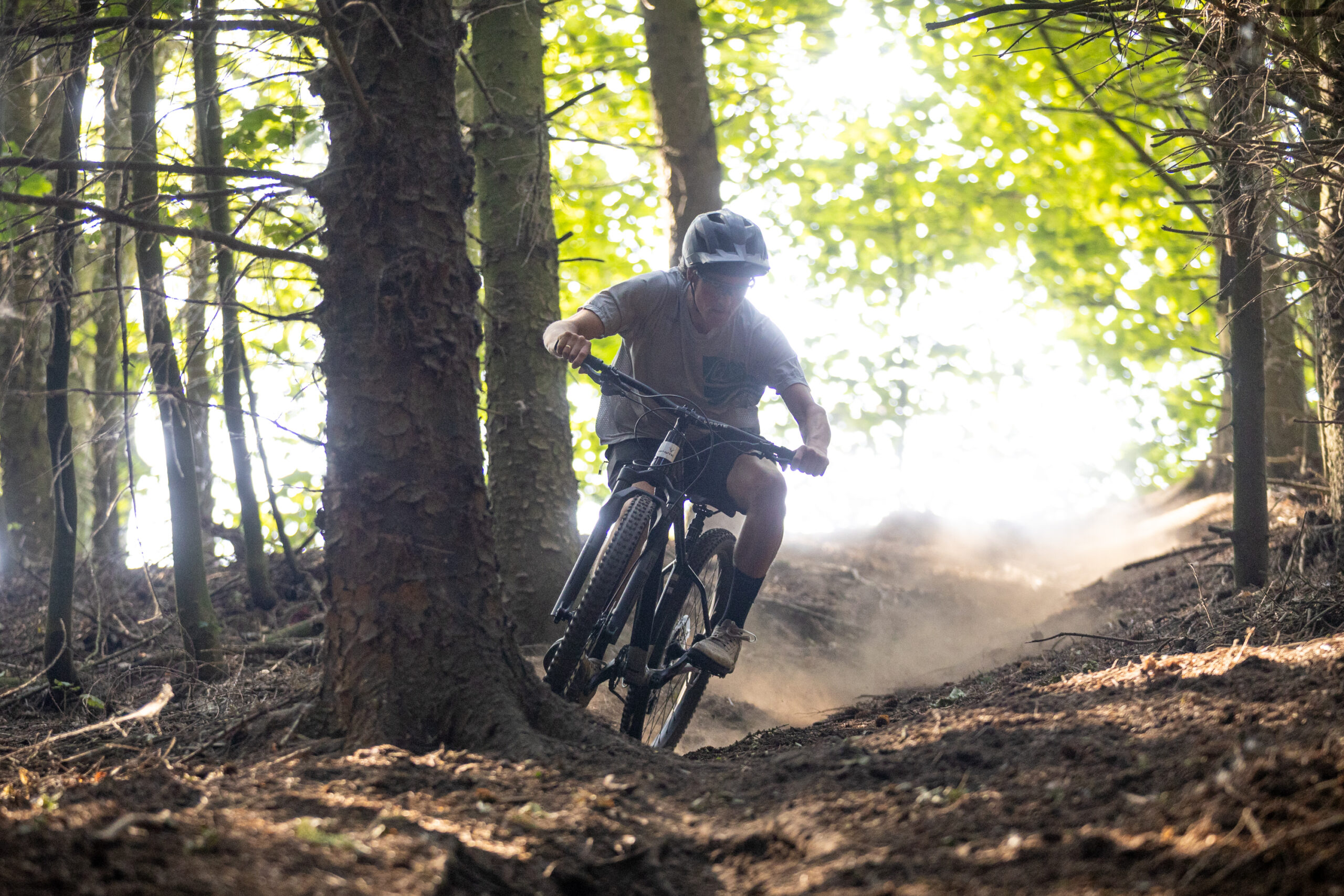
Whyte Secta RS
One way to take the edge off this would be to plug in a wider 2.6in rear tyre with more cushioning. Whyte makes sure there is room for this by having no lower bridge and a broader stay gap. I’d only recommended this solution in dry weather though, as hardtails with fatter tyres feel really sketchy when it’s greasy as the edges struggle to cut in and the tyre kind of ‘aquaplanes’ and floats, rather than bites and finds traction in the wet.
My first impression of the Secta never went away the more I rode it. Just sling a leg over and it feels spot on. There are no surprises or quirks in the handling and, just as importantly, no annoying rattles or clunks too common on cheaper bikes.
The low-slung frame never gets in the way of my body parts, and all the bike parts work as intended. Best of all, it’s just a ton of fun to muck about and get around on without ever feeling like a cheap or flimsy machine.
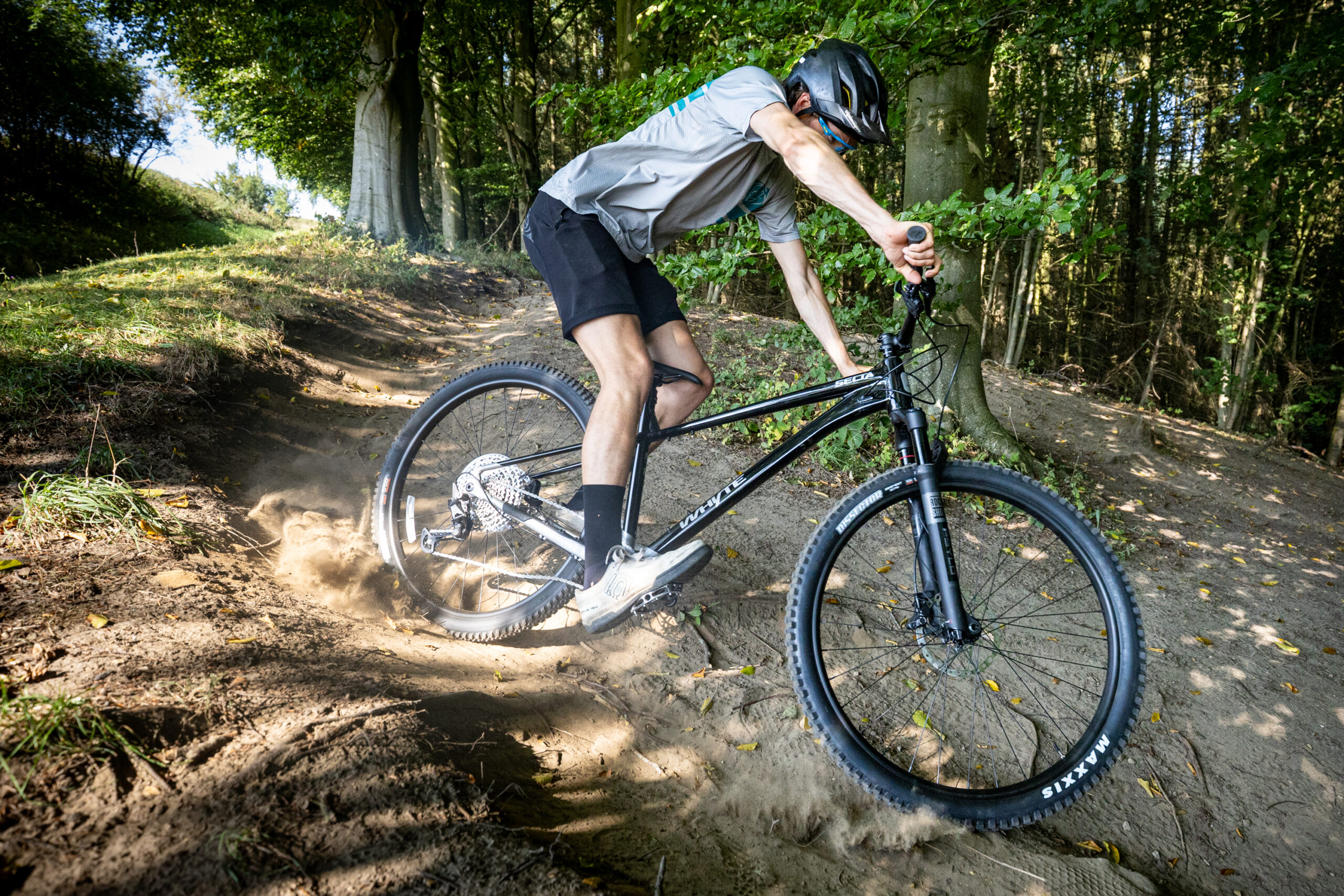
Whyte Secta RS
Verdict
Without significant budget hardtail rivals like Nukeproof and Ragley in the picture anymore, there are few bikes out there that can keep up with Whyte’s new Secta as a top value proposition with great kit. Big name brands like Specialized and Trek offer you much less kit for your cash, and while Cannondale’s Habit HT and Merida’s Big Trail come closer, the parts are still not quite as good. Meanwhile, Canyon’s Grand Canyon has much less aggressive and DH-focussed geometry. The icing on the cake here with the Secta then is that everything from the ride quality to the geometry and kit details have been nailed down where it matters most. I reckon you’ll be doing well to find a better trail hardtail for this kind of cash.




